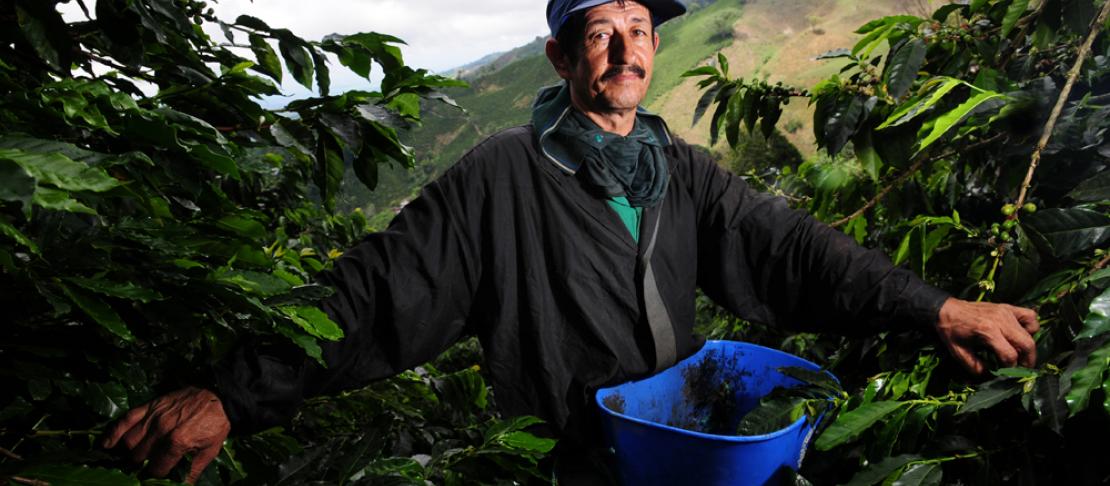Arabica’s magic skin

This blog was originally posted on the International Center for Tropical Agriculture (CIAT) News Blog. Read original
Every year, we drink some 400 billion cups of coffee around the world, making this the most widely traded agricultural commodity of the tropics. Coffee fuels our daily lives and that of the world’s 25 million coffee producers, most of whom are smallholder farmers directly dependent on coffee for their livelihoods.
Coffee trees are fussy and will produce their best beans at high altitudes in a tropical climate where the temperatures are stable and the soil is rich. Such conditions are typically found along the Equatorial zone.
 The problem is that, in many tropical areas of Mesoamerica, coffee will no longer be in its “comfort zone,” as temperatures and rainfall are altered. Indeed, both models and farmers confirm that climate changes will decrease the area suitable for coffee and effectively displace its production up to higher altitudes and cooler climates.
The problem is that, in many tropical areas of Mesoamerica, coffee will no longer be in its “comfort zone,” as temperatures and rainfall are altered. Indeed, both models and farmers confirm that climate changes will decrease the area suitable for coffee and effectively displace its production up to higher altitudes and cooler climates.
In Central America as a whole, the optimal coffee-growing elevation will shift from 1,200 meters above sea level today to 1,600 meters by 2050.
According to a recent study by CIAT in El Salvador, Guatemala, Mexico, and Nicaragua, this will affect a number of vulnerable coffee growing families, who currently lack the capacity to adapt to new conditions.
Across Mexico and Central America, over 4 million people depend directly on coffee production for their livelihoods, and coffee production, purchasing, and processing employ an estimated 8.5 million in the region. Employment and income generation from coffee is also particularly significant for many indigenous people in Mexico and Guatemala.
Families who participated in the study identified a series of general strategies for adaptation to climate change including the development or improvement of technologies such as drip irrigation in areas with high risk of drought, shade management, soil fertility management, pest and diseases control, conservation of soil and groundwater, and adoption of new crops to adapt to future conditions.
Read the rest of the story on the CIAT News Blog.
Get the peer-reviewed article: An Integrated Framework for Assessing Vulnerability to Climate Change and Developing Adaptation Strategies for Coffee Growing Families in Mesoamerica, by Maria Baca, Peter Läderach,
Learn more:
- Arabica coffee: Falling yields and rising prices
- In Uganda, coffee and banana go better together
- Two Degrees Up: climate change photofilms
Stefanie Neno is Public Awareness Coordinator for the International Center for Tropical Agriculture (CIAT), based in Palmira, Colombia.



